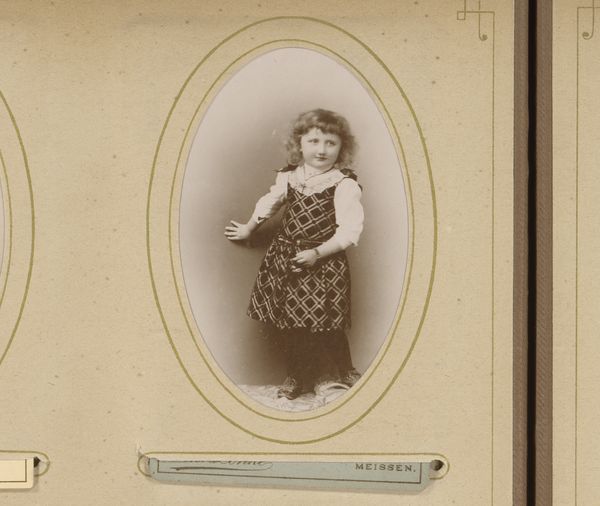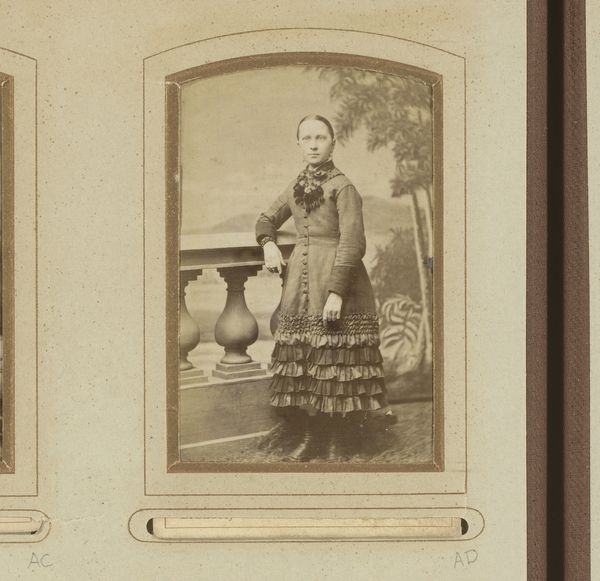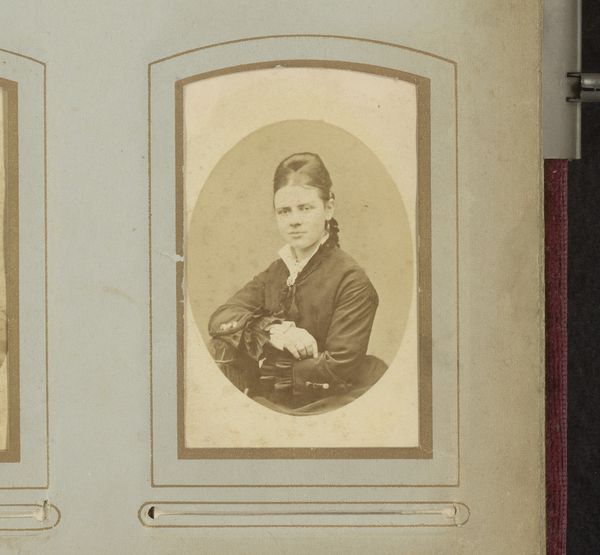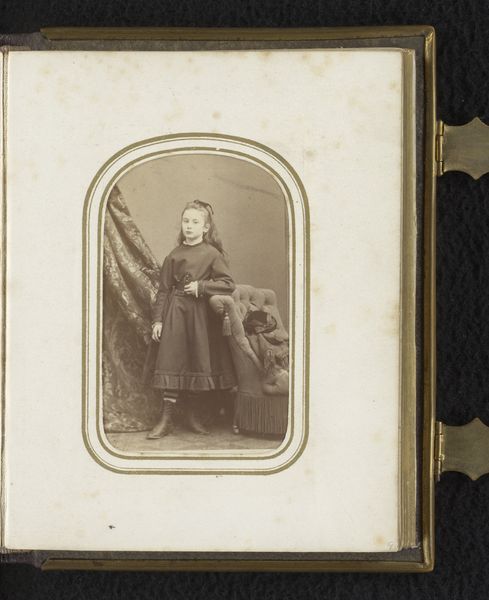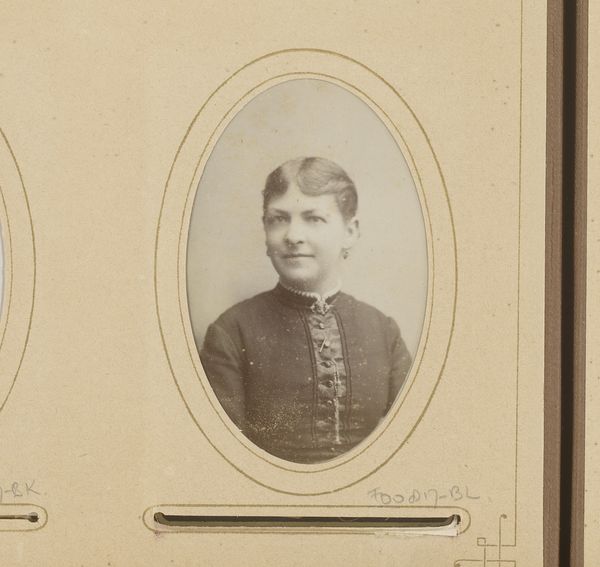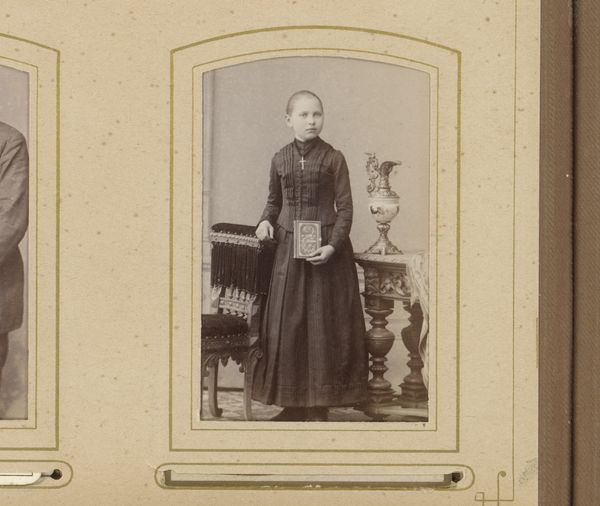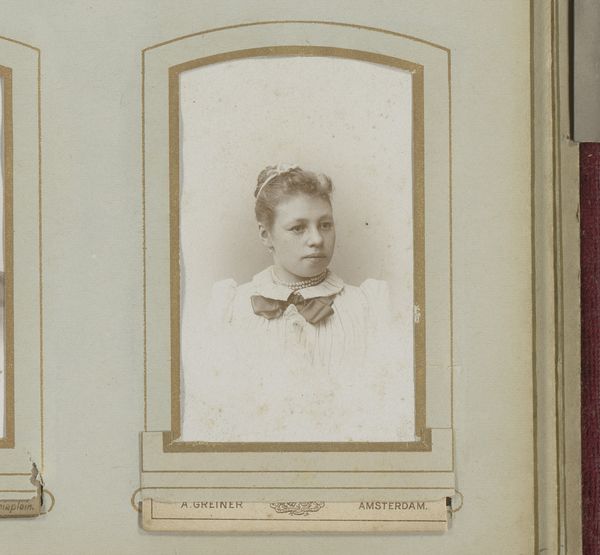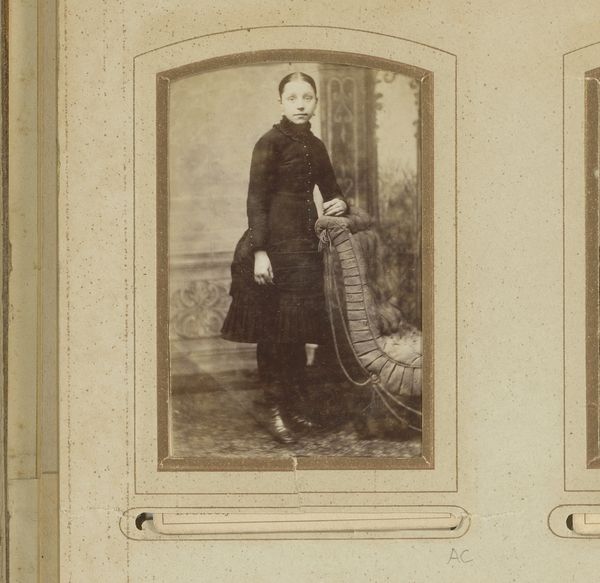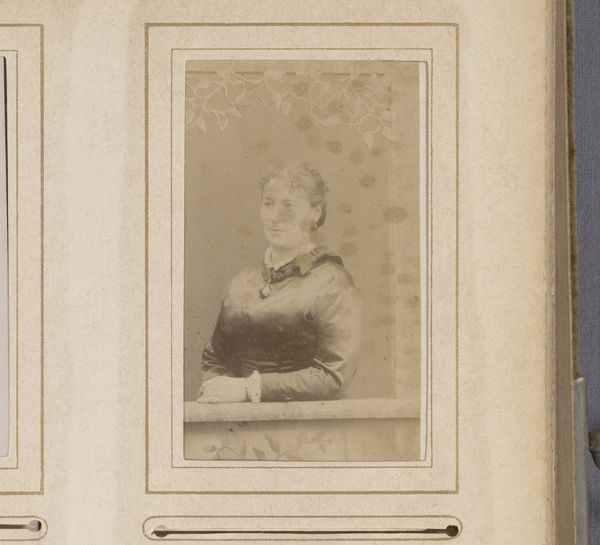
photography
#
portrait
#
pictorialism
#
photography
#
genre-painting
#
watercolor
Dimensions: height 83 mm, width 52 mm
Copyright: Rijks Museum: Open Domain
Editor: Here we have an interesting photographic portrait titled “Portret van een meisje,” placing it somewhere between 1875 and 1910, attributed to Jacques Pilartz. There's a soft, almost dreamlike quality to it. What strikes me is how much it resembles painting. How do you interpret this blending of media in terms of its cultural context? Curator: That "dreamlike quality" is key, it speaks directly to the Pictorialist movement and its aim to elevate photography to the status of fine art, moving away from mere documentation. So the question isn't just about blending media but about social and institutional aspirations. This image actively challenges photography's perceived limitations. Consider how museums and galleries at the time were reluctant to display photography alongside paintings. Do you see how this impacts its production and reception? Editor: That makes perfect sense! It's like it's trying to *prove* itself as art, justifying its place in those institutions. Was this a common sentiment among photographers then? Curator: Absolutely. Pictorialists saw photography's mass-produced nature as a threat to its artistic integrity. They actively sought techniques—soft focus, handmade prints, painterly compositions—to distinguish themselves from commercial photographers and argue for its place in high culture. The framing even evokes a cabinet card, linking this piece to both fine art *and* mass consumption. Does knowing this alter how you view it? Editor: Definitely. It shifts my focus from the subject herself to the wider debate about what constitutes "art". I now wonder who was this photo aimed towards? Was this a public attempt to bridge the gap between common assumptions about what photos "should" look like and what Pictorialists wanted it to become? Curator: Precisely! Its public role was crucial. It participates in a larger discussion about who gets to define art and how artistic value is constructed within a specific social and political climate. I find that very powerful to take away. Editor: Me too! Understanding its role in shifting those definitions really deepens my appreciation.
Comments
No comments
Be the first to comment and join the conversation on the ultimate creative platform.
